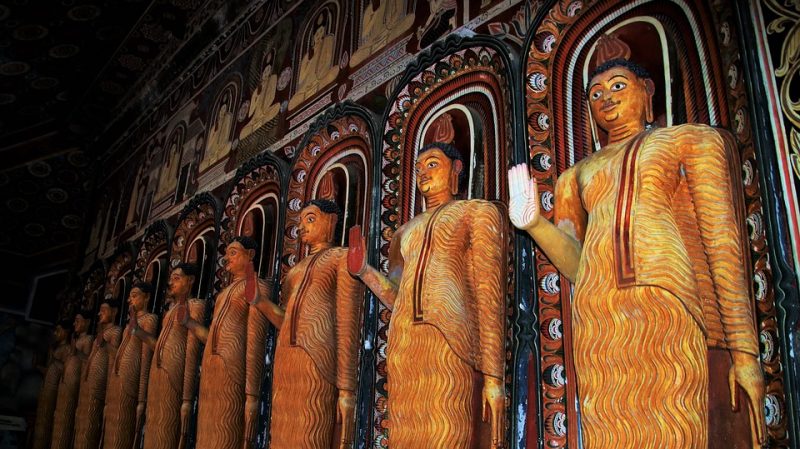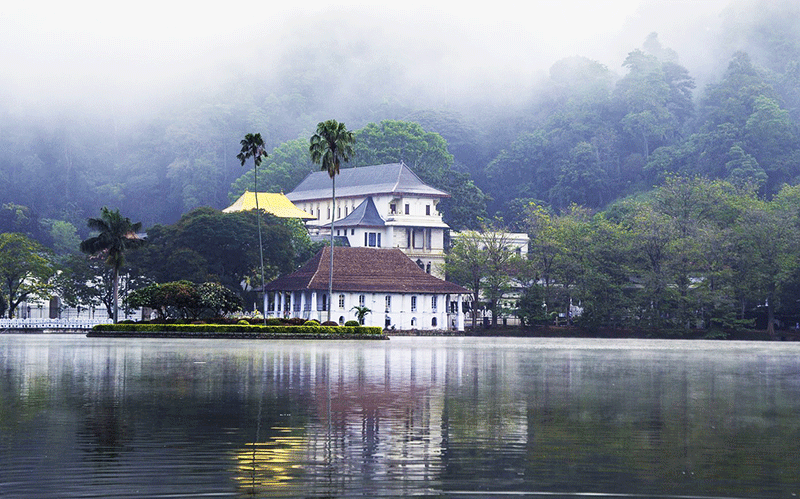
Seruwila Raja Maha Vihara
Table of Contents
- Buddhism in Sri Lanka
- Seruwila Buddhist Temple
- History of Seruwila
- Excavations
- The revival of the temple
- How to get there
Buddhism in Sri Lanka
Sri Lanka is a leading Buddhist country in the region and the majority of Sri Lankans are believing in Buddhism. Thousands of Buddhist temples spread all over Sri Lanka and many of them are popular Buddhist pilgrimage sites and part of most Sri Buddhist tours. These temples are categozied into a few categories such as Buddhist temples, Buddhist teaching centres, universities, meditation centres, Piriven or schools for Buddhist monks and many other institutions closely related to Buddhism. It is estimated that more than 3000 Buddhist temples are scattered in Sri Lanka.

Buddhism is the base of Sri Lanka society. According to the Buddhist ideology religious equality, gender equality, ethnic harmony, and freedom of expression are among the main characteristics that should be visible in society. Buddhism is the most ancient religion in Sri Lanka, which was introduced to the island in the 2nd century BC by Arahat Mahinda. Since then Buddhism is the state religion of Sri Lanka.
Today, I’m making this note about Seruwuila Raja maha vihara. Seruwila Buddhist temple is one of the most ancient temples on the island and has a very important historical background. In the backdrop of high religious and historic importance, the temple is still not on the radar of travellers. It remains one of the beaten path tourist attractions in Sri Lanka despite its historical importance.
The reason I believe that it remains an unpopular tourist place is due to its remoteness. The temple is tucked away on the eastern coast of Sri Lanka demanding the visitors to make a well over 6 hours trip from Colombo. It is not a Sri Lanka day trip attraction. A trip to Seruwila Tempel should at least be a 2 day Sri Lanka trip.
If you visit a Sri Lanka Buddhist temple, there are a few facts that you need to know. Especially the dress code, which should be in the prefered manner, so that it does not harm the feeling of the devotees.
All visitors to these sacred places are supposed to dress in a particular manner to uphold their religious values. There is a set of rules that every visitor to religious sites observes while visiting sacred places in Sri Lanka. If you are wondering what these rules are, check out this article “13 RULES TO OBSERVE WHILE VISITING SRI LANKA BUDDHIST TEMPLE, SRI LANKA TEMPLE DRESS CODE TEMPLE OF THE TOOTH DRES’ CODE“.
Seruwila Buddhist Temple
Seruwila Raja Maha Vihara is a historically important Buddhist temple located in eastern Sri Lanka in the district of Trincomalee. Seruwila Raja Maha Vihara is one of the most sacred places for the Buddhists on the island and it is a place for pilgrimage tours. Seruwila Raja Maha Vihara is a popular temple among local travellers but it is rarely included in Sri Lanka tour itineraries made for foreign travellers, due to the remoteness from Colombo.
This ancient temple is one of the few places on the island, where Buddha had been, in the 6th Century BC. Seruwila Raja Maha Vihara is a good example to show the occupation of Sinhala Buddhists in the Eastern Province from the early days of the civilization on the island. Even though the Sinhala Buddhists in the region first mentioned with the arrival of Buddha, historians believe that the area was inhabited by native indigenous people since the beginning of the Stone Age.
History of Seruwila
Historical evidence suggests that the temple was inhabited by a large number of monks. The temple with 500 monks had been a well-developed monastery complex; it was consisting of living quarters for monks, an image house, Dagoba, Bo-tree and other amenities required by the monks. King Kawantissa had granted a number of villages to the temple. The earnings from the villages had been used to maintain the temple.
The most important element of this temple is the Dagoba, which enshrined the hair relic of Buddha. Part of the hair relic of Buddha that was received by Thapassu, Balluka (two Indian merchants) are enshrined in the Dagoba. The ancient chronicle Dhatuwansa claims that the dagoba was built by King Kawantissa (205-61 BC).
According to the historical evidence a Bo tree was planted in a nearby Buddhist village in the 3rd century BC. The village, where the Bo tree was planted is identified as the modern Kiliveddi by historians. The Bo tree was known as Sri Wardana Bodhi and was managed by Seruwila Raja Maha Vihara; the Bo tree was destroyed by the terrorists during the civil war.
Excavations
Archaeologists have found a number of artefacts during the excavation at the Seruwila Raja Maha Vihara. Based on the findings at the site, archaeologists believe that the temple had been an important religious place for the Nagas tribe.
Two rare Buddha statues were among the valuable items that were unearthed at the site, one statue is protected by a nine-hooded cobra and another one is protected by a cobra with seven heads. There is a large number of monuments still hidden in the jungle. Hundreds of houses made of stones, stone ponds, and remnants of Buddhist temples are among the valuable items found during the excavations.
The revival of the temple
The modern revival of this historical, sacred place started with the arrival of Sumedhankara Maha Nahimi (chief monk) in 1921. Initially, the sacred area was inhabited by wild animals such as elephants, bears, leopards etc. furthermore there were lots of hardships for the monks during the thirty years of civil war in eastern Sri Lanka.
A large number of people fled villages around the temple due to threats from the terrorists. But the braveness of the monks made them stay behind and help the remaining families of the nearby villages. Thanks to the number of Buddhist monks, it has become a well-built Buddhist temple today and which helps to prove the inheritance of Sinhalese Buddhists in eastern Sri Lanka.
How to get there
There are two main routes to reach Seruwila Raja Maha Vihara. one is from Trincomalee while the second route begins in Kantalay. On the first route, one needs to go by boat to Muttur, which is located around 14 km from Trincomalee then a 16 km long drive to Seruwila Raja Maha Vihara. Kinniyatota and Uppuarutota are two important landmarks that are passed along this way. Most Buddhist are using the second route which starts from Kantalay and the drive is estimated to be around 90 km.
